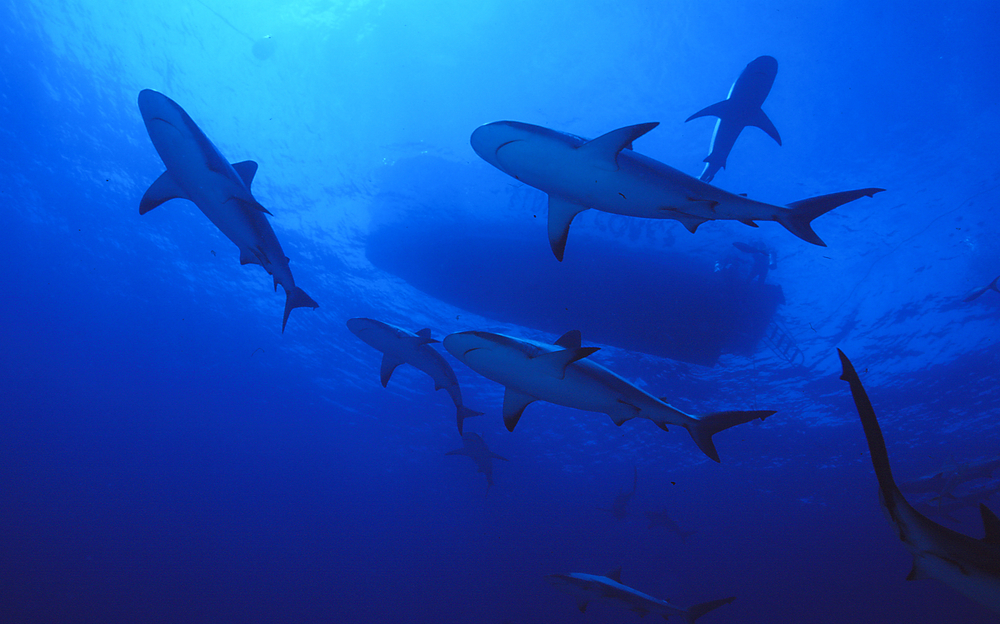Hurricane Idalia wreaked havoc in Florida last Wednesday, leaving a trail of destruction in its wake as a powerful Category 4 storm. Homes were swamped, highways transformed into rivers, electricity lines were downed, and at least one person died in a traffic-related tragedy. Humans, with our shelters, flashlights, and evacuation plans, braced for the onslaught. Nonetheless, as Idalia and other recent storms have demonstrated, we are still vulnerable to nature’s fury.
Surprisingly, aquatic animals, particularly sharks, have their own arsenal of tactics for dealing with hurricanes. Let’s explore this intriguing underwater world, where weather forecasting is as old as the sea itself.
Shark’s secret weather app: Built-in storm sensors
Humans rely on a variety of equipment to predict impending storms, such as satellites and radar systems, but sharks have a meteorological tool built into their biology. The atmospheric pressure, or barometric pressure, drops as a storm approaches. This decrease in air pressure results in a decrease in hydrostatic pressure, or water pressure. Sharks take the lead here because they have hair cells in their inner ears that can detect these small changes, thus acting as a built-in barometer.
Sharks can detect an approaching hurricane hours, if not days, before it reaches landfall, according to scientific research dating back at least two decades. Sharks have an advantage in storm prediction due to their pressure-sensitive cells and other less-understood indicators such as changes in currents and salinity.
Bradley Strickland, a marine biologist at the Virginia Institute of Marine Science, sheds light on shark behavior in the face of an impending storm. He describes how smaller and younger sharks tend to flee to deeper waters as barometric pressure drops. Strickland saw juvenile bull sharks fleeing their coastal Everglades homes for deeper waters during Hurricane Irma’s onslaught on Florida.
“We saw these juvenile sharks that have never experienced a storm of great magnitude in their lifetimes detect the storm coming and leave in advance,” Strickland recounted. “What they did was head to deeper water, which was indeed the safest place to be.”
A 2003 study found a similar response in immature black-tipped reef sharks. These sharks departed their shallow bay in south Tampa just before Tropical Storm Gabrielle hit, only to return several days later.
Should they stay or should they go?
Not all sharks follow the same playbook. Some larger sharks take a different approach, appearing unconcerned about an impending hurricane. During a cyclone, smaller fish are threatened by powerful winds and storm surges, whereas larger sharks, such as tiger sharks and hammerheads, stay put. During Hurricane Matthew, a Category 5 storm, researchers tracked these fearsome creatures throughout Florida and the Bahamas.
“I was amazed to see that big tiger sharks didn’t evacuate even as the eye of the hurricane was bearing down on them,” shared Neil Hammerschlag, a shark researcher at the University of Miami. He observed that the number of tiger sharks in the vicinity increased temporarily after the storm, implying that the sharks feasted on weakened or killed prey.
These data suggest that when a severe storm approaches, sharks face an option similar to humans: stay or go. It highlights the significant impact of natural disruptions on both our lives and the lives of these oceanic giants.
Hunting in the eye of the storm
While hurricanes may upset the natural order of the ocean, they provide some sharks with an unexpected chance. These apex predators thrive on the turmoil caused by hurricanes, transforming nature’s wrath into a potential meal.
In other ways, storms may not be the most severe threat to sharks, especially when contrasted with the broader implications of climate change, such as coral reef destruction. Even though these storms are damaging, they provide an opportunity to study how animals adapt and deal with rapid environmental changes.
One thing is sure as we continue to unravel the mysteries of marine life: sharks have their own weather prediction that has been tuned over millions of years of evolution, making them formidable storm chasers in the ocean’s ever-changing landscape.











